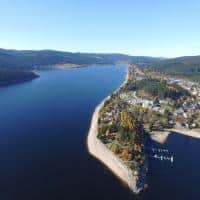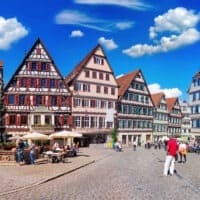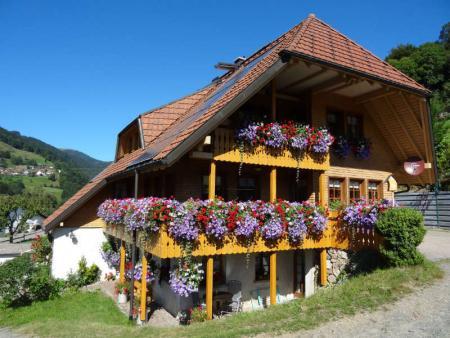Mining
The Kinzig valley and its side valleys were also an important mining area. The small mining settlement of Wittichen near Schenkenzell in the upper Kinzig valley had numerous pits in which a variety of barite, cobalt and silver was mined. A geological path still leads today as a circular route past old pits and spoil heaps. Show mines were set up in Oberwolfach and in Haslach-Schnellingen.
A renewed upswing began at the beginning of the 18th century after the loss of Alsace to France. It lasted until the 19th century. Many pits from this time can now be visited as a show mine, such as B. the pit Teufelsgrund (Münstertal), the hope tunnel Dead moss and the mine in the Schauinsland.
Forstwirtschaft
Over the Kinzig, Murg (Northern Black Forest) and the Rhine, wood from the Black Forest was exported for several centuries by rafting for use in shipbuilding, as construction timber and other things. The last boom in this branch of trade, which has been practiced since the early Middle Ages, took place in the last two centuries of the past millennium. Since the long and straight fir trees were mostly rafted to Holland for shipbuilding, they were also simply called "Dutch". To this day, reforestations with spruce monocultures bear witness to the destruction of the natural mixed forest. Due to the expansion of the rail and road network, rafting largely ended in the 19th century.
In the meantime, the importance of the wood stocks in the Black Forest has increased again due to the increasing sale of pellet heating.
Glass manufacturing
The Black Forests were also well versed in the manufacture of glass. Some glassblowing factories still testify to this today. B. in Hell ValleyWherein Todtnau and in Wolfach can be visited.
Precision engineering, watch and jewelry production
From the beginning of industrialization to the present day, Pforzheim has hosted numerous jewelry manufacturing companies that process precious metals and stones. The goldsmith school located there is also based in Pforzheim.














